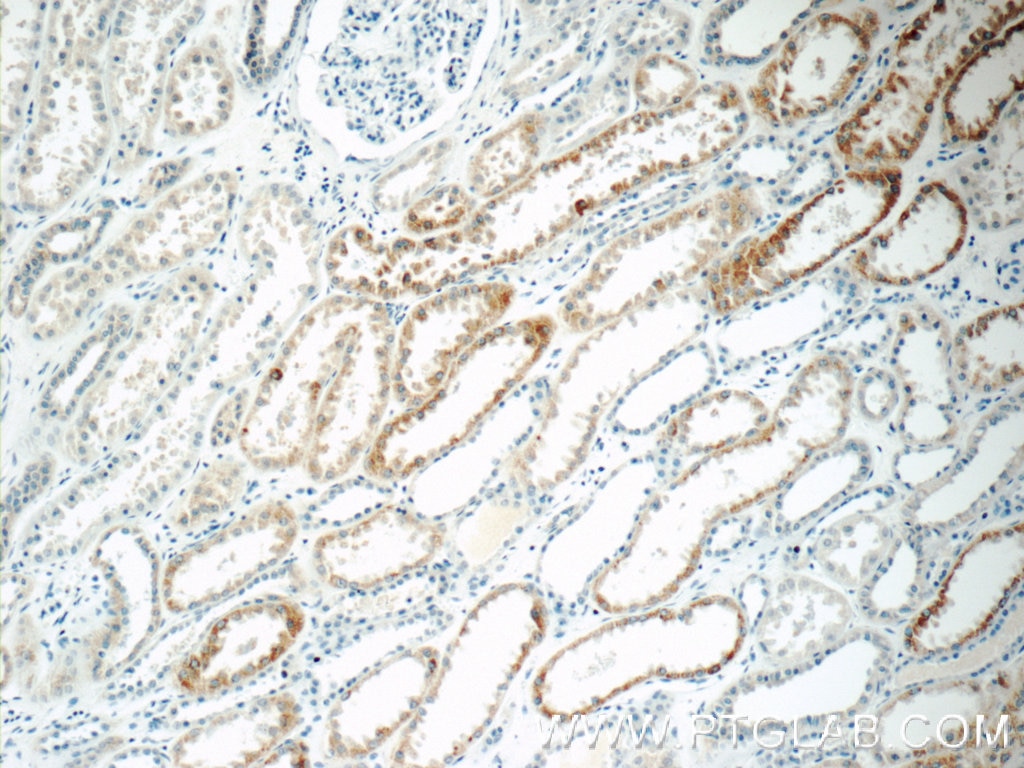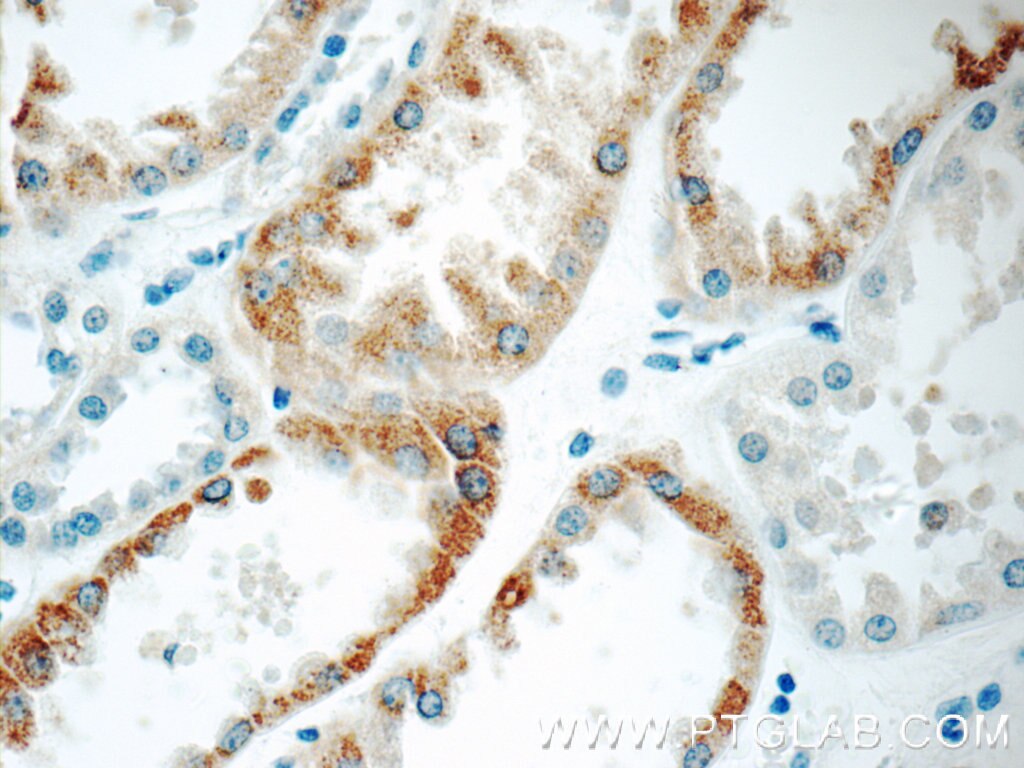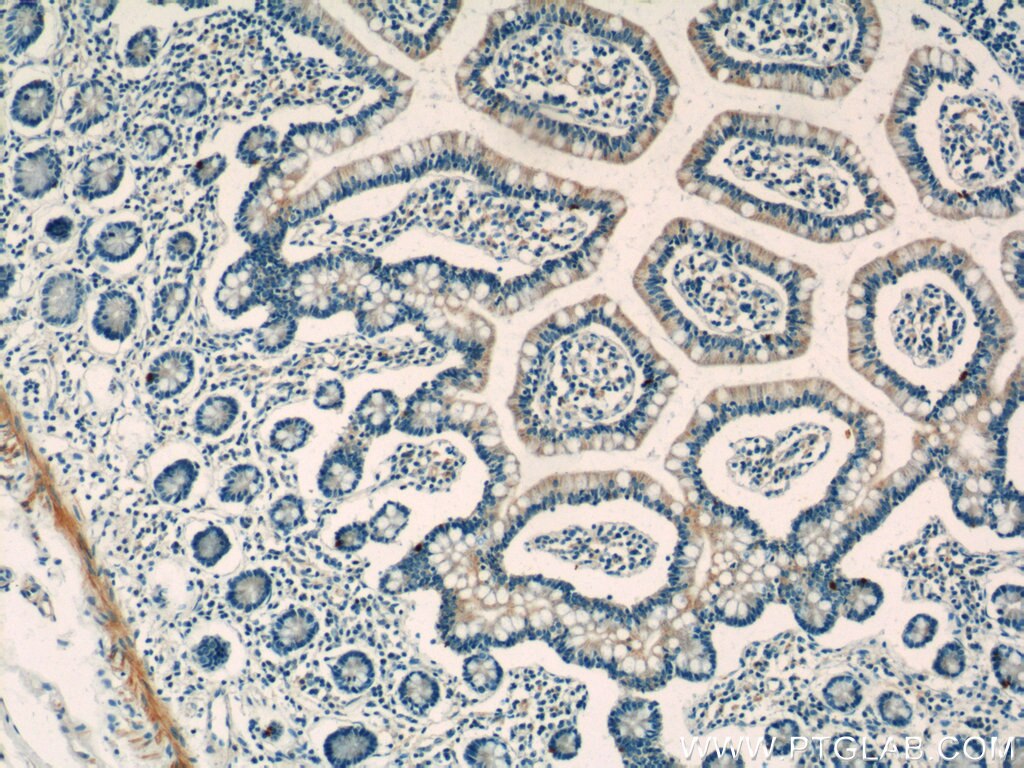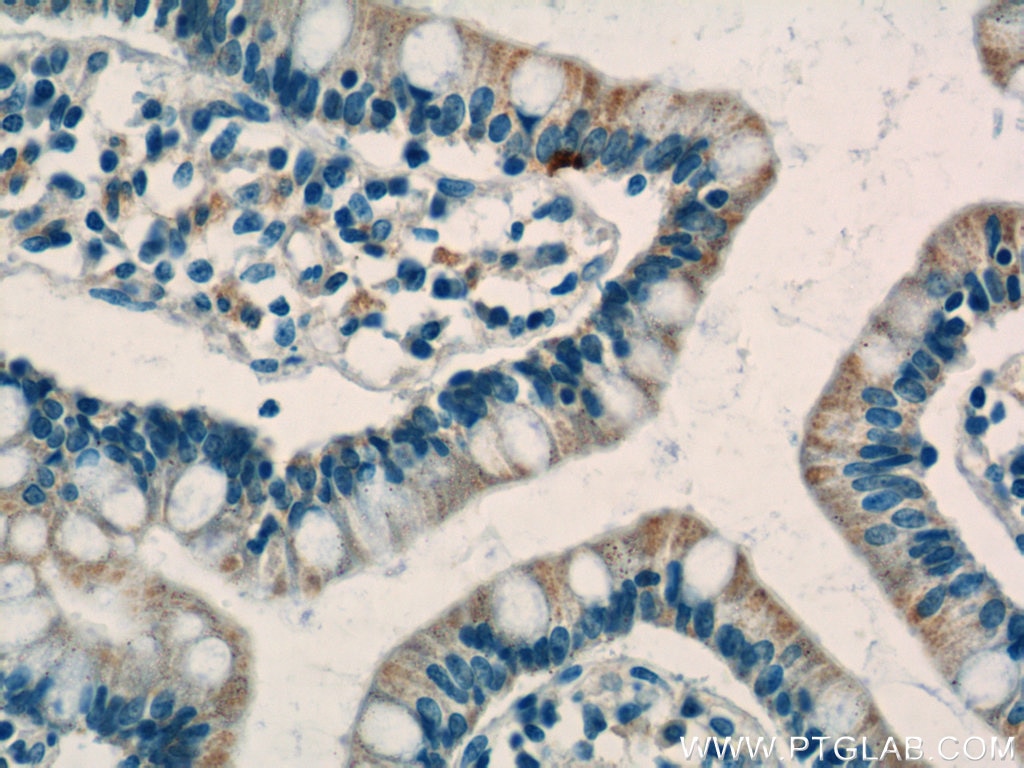Tested Applications
| Positive IHC detected in | human kidney tissue, human small intestine tissue Note: suggested antigen retrieval with TE buffer pH 9.0; (*) Alternatively, antigen retrieval may be performed with citrate buffer pH 6.0 |
Recommended dilution
| Application | Dilution |
|---|---|
| Immunohistochemistry (IHC) | IHC : 1:20-1:200 |
| It is recommended that this reagent should be titrated in each testing system to obtain optimal results. | |
| Sample-dependent, Check data in validation data gallery. | |
Published Applications
| IF | See 1 publications below |
Product Information
11414-1-AP targets C1QTNF3 in IF, IHC, ELISA applications and shows reactivity with human, mouse, rat samples.
| Tested Reactivity | human, mouse, rat |
| Cited Reactivity | human, rat |
| Host / Isotype | Rabbit / IgG |
| Class | Polyclonal |
| Type | Antibody |
| Immunogen |
CatNo: Ag1958 Product name: Recombinant human C1QTNF3 protein Source: e coli.-derived, PGEX-4T Tag: GST Domain: 118-246 aa of BC016021 Sequence: IAFMASLATHFSNQNSGIIFSSVETNIGNFFDVMTGRFGAPVSGVYFFTFSMMKHEDVEEVYVYLMHNGNTVFSMYSYEMKGKSDTSSNHAVLKLAEGDEVWLRMGNGALHGDHQRFSTFAGFLLFETK Predict reactive species |
| Full Name | C1q and tumor necrosis factor related protein 3 |
| Calculated Molecular Weight | 319 aa, 35 kDa |
| GenBank Accession Number | BC016021 |
| Gene Symbol | C1QTNF3 |
| Gene ID (NCBI) | 114899 |
| RRID | AB_2877763 |
| Conjugate | Unconjugated |
| Form | Liquid |
| Purification Method | Antigen affinity purification |
| UNIPROT ID | Q9BXJ4 |
| Storage Buffer | PBS with 0.02% sodium azide and 50% glycerol, pH 7.3. |
| Storage Conditions | Store at -20°C. Stable for one year after shipment. Aliquoting is unnecessary for -20oC storage. 20ul sizes contain 0.1% BSA. |
Protocols
| Product Specific Protocols | |
|---|---|
| IHC protocol for C1QTNF3 antibody 11414-1-AP | Download protocol |
| Standard Protocols | |
|---|---|
| Click here to view our Standard Protocols |
Publications
| Species | Application | Title |
|---|---|---|
BMJ Open Diabetes Res Care Plasma C1q/tumor necrosis factor-related protein-3 concentrations are associated with diabetic peripheral neuropathy. | ||
Peptides C1q/TNF-related protein 3 alleviates heart failure via attenuation of oxidative stress in myocardial infarction rats |










